A workflow assigned to a dataset catalog applies to all the datasets under the catalog.
A workflow has different stages and each stage is assigned to different roles. The users with the assigned roles receive the work queue notifications as the object moves across the stages. They can enter relevant comments while moving the object to the next stage.
Executing workflows involves:
- Receiving workflow queue notifications.
- Examining and moving the dataset to the next stage.
To execute workflows for the datasets, follow these steps:
- Go to Application Menu > Data Marketplace > Datasets > Explore.
- Click
 .
. - Click My Workflow Queue.
- Click the <Object_Name> appearing as a hyperlink.
- Hover over the Workflow Status card and click
 to edit.
to edit. - Click Send To - <Next_Stage> to move the object to the next stage of the workflow.
The Send To - <Next_Stage> option changes to green.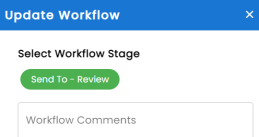
- Enter workflow comments and then, click Save & Send.
The following page appears.
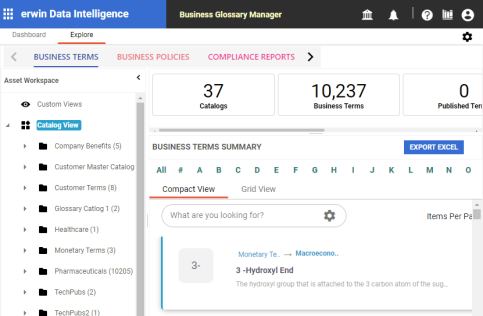
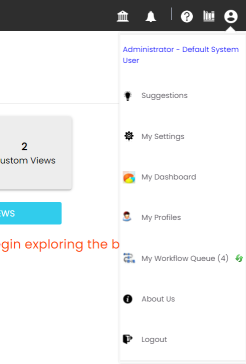
The My Workflow Queue page appears. It displays workflow queues.
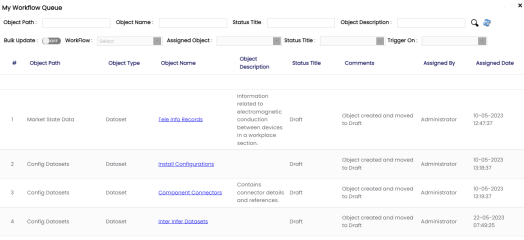
You can search the object by entering any of the fields namely, Object Path, Object Name, Status Title, and Object Description, and clicking ![]() .
.
The dataset summary page appears.
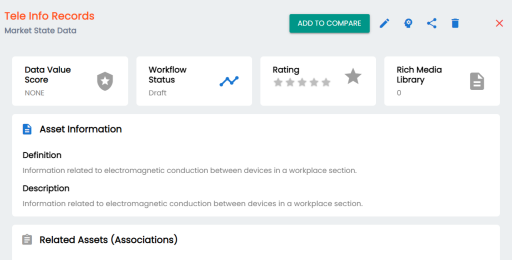
The Update Workflow page appears. These options depend on the stages of the assigned workflow.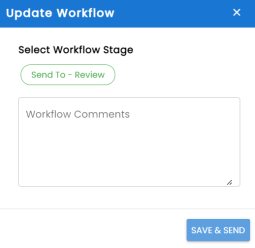
The workflow status is updated to the <Title_Status> of the next stage and the users with the assigned roles receive the work queue notification.
Each stage in the workflow is assigned to different roles. For example, if the Draft stage in the workflow was assigned to Mapping Admin role then, the users with the Mapping Admin role receive the work queue notification.
As the object moves through different stages, you can view the workflow log to see its workflow status. For more information on viewing the workflow logs of datasets, refer to the Viewing Workflow Logs topic.
A dataset can be moved to different stages and finally, it can be published.
|
Copyright © 2023 Quest Software Inc. |